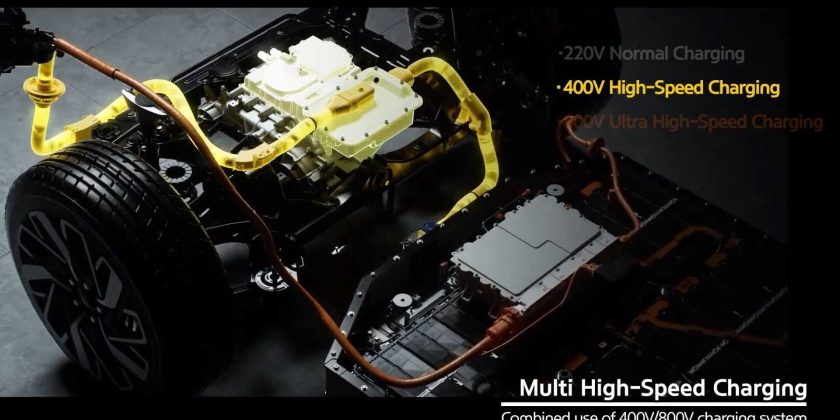The multi-charging (800V/400 V)system is versatile, but does it sacrifice efficiency at 400 V chargers?
The 800 V battery system is one of the solutions that allow for significantly increasing the charging power (compared to conventional 400 V), without increasing current values, which is important because of the thermal properties of the charging connector and cables.
In general, the increase of power, through the increase of voltage should also make the fast charging and general system more efficient.
Most recently, Hyundai Motor Group announced details of its Electric – Global Modular Platform (E-GMP), which will support 800 V natively.
The South Korean manufacturer has decided to develop the Integrated Charging Control Unit (ICCU), which offers DC fast charging at around 800 V (up to 350 kW), as well as at the more common 400 V level. Moreover, the ICCU is also an on-board charger (reportedly up to 11 kW) and can export up to 3.5 kW of AC power through the vehicle-to-load (V2L) function.
However, if the power electronics are designed for 800 V voltage, it might not work equally efficiently at lower voltage levels – or simply at 400 V DC chargers. This is why there is usually another step involved to boost the voltage.
In its presentation, Hyundai Motor Group shows two cases. The first is direct charging of the battery from the 800 V DC fast charging. The second one, on the right, is indirect charging from a 400 V DC fast charger, that involves power electronics (inverter) of the Integrated Drive Axle (IDA) to boost the voltage to the 800 V range:
Gallery: Hyundai Electric-Global Modular Platform (E-GMP)
* all the 800 V and 400 V numbers are just nominal ranges, as the voltage changes significantly between the low state-of-charge and high state-of-charge.
Source: Read Full Article







